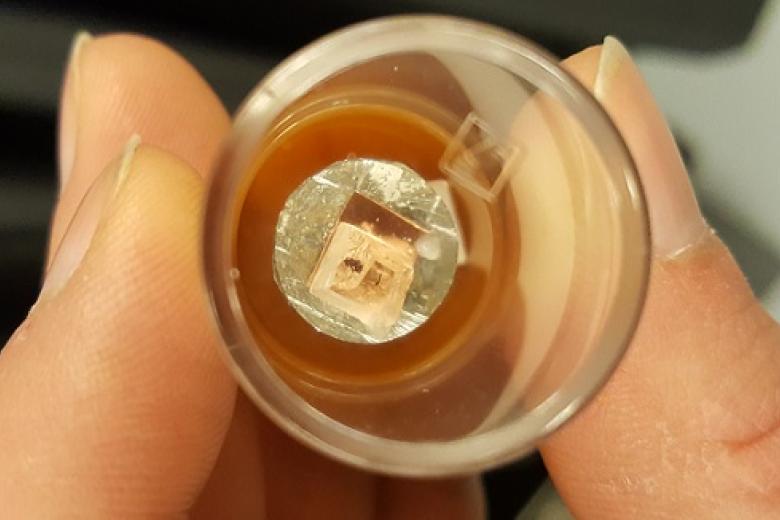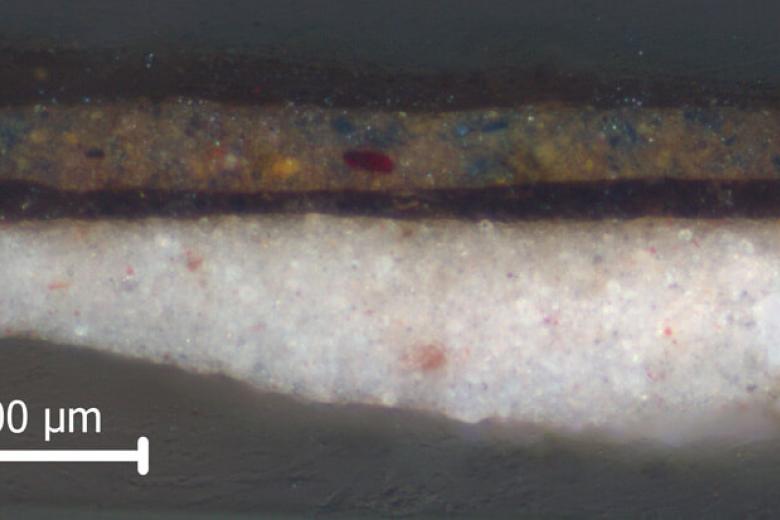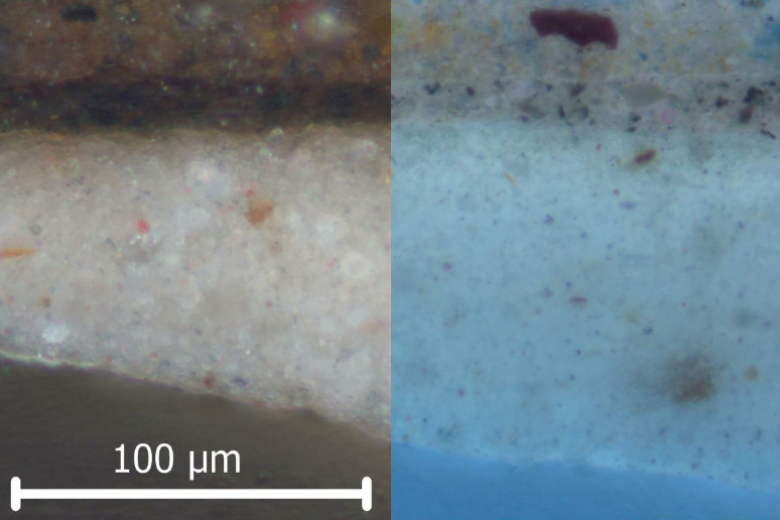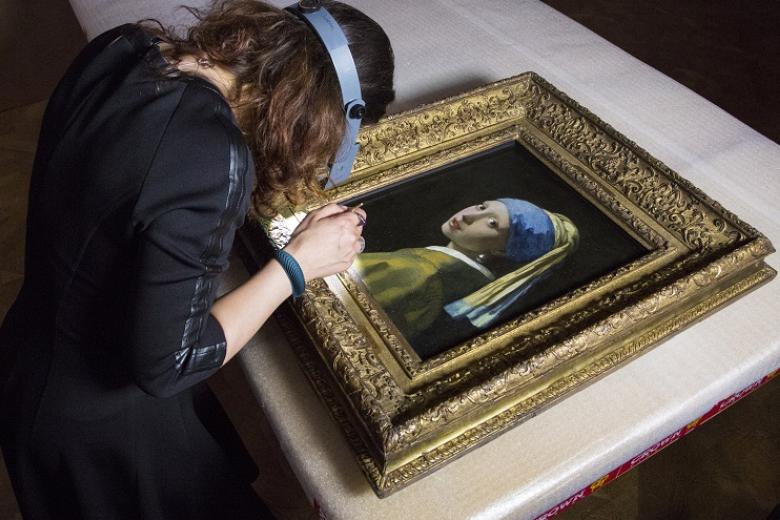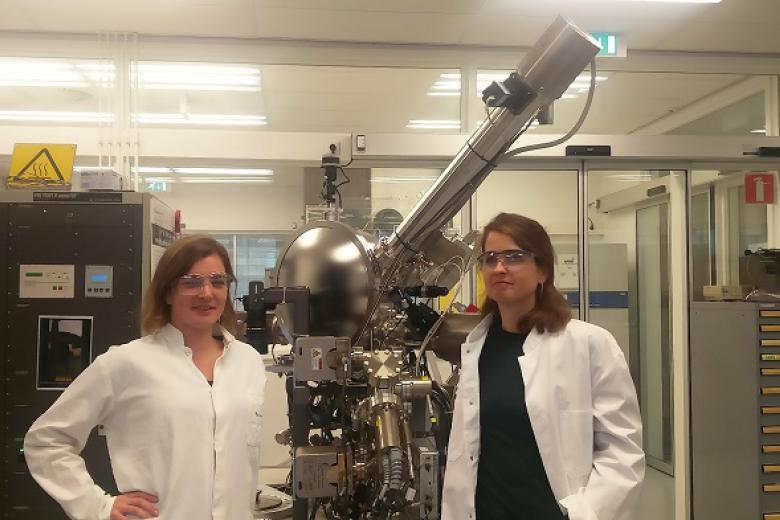Unlocking the mysteries of the girl with a Pearl Earring
The canvas appeals to the imagination: her enigmatic gaze, the artist's use of colour and the outstanding play of light. Scholars have been fascinated by the work of art for years, particularly given that so many questions have gone unanswered. How did Vermeer paint his iconic masterpiece? Which materials did he use? The Mauritshuis in The Hague launched an in-depth investigation on Johannes Vermeer's Girl with a Pearl Earring (1665), which will run until 11 March 2018. With this project, titled 'The Girl in the Spotlight', the Mauritshuis hopes to find answers to these long-standing questions. A team of international experts will use state-of-the-art technologies to investigate the canvas, pigments, oils and other materials Vermeer used to create his famous painting. Maastricht University is also contributing to this special project.
Peeling back the layers
Anne Bruinen picks up a clear tube from her desk. The seemingly insignificant tube contains a plastic block. Upon closer inspection, a dark spot can be seen wedged between the plastic: a tiny flake from the cloak worn by the girl in the painting. 'This sample was removed from the painting during the last restoration in 1994,' explains Bruinen. 'But they didn't have the technological advancements we have now, so we hope this tiny flake can tell us more this time around.' The mystery of the tiny flake is suspended in a thin layer between two thicker clumps of white pigment. In order to determine the composition of this layer, the team of researchers at the Mauritshuis enlisted the help of the Maastricht MultiModal Molecular Imaging Institute (M4I). 'I was raised in The Hague area and a friend of mine works as a conservator at the Mauritshuis,' Bruinen says of the connection.
Molecules
Normally, M4I researchers examine very different samples than those taken from iconic paintings. In their daily work, Anne Bruinen and her colleagues in the team led by Professor Ron Heeren analyse biological tissue samples. They do so using mass spectrometry imaging, a technique used to determine how molecules are distributed across a tissue sample or other complex surface. 'This technology captures thousands of different molecules at the click of a mouse. In just one click, we can see the full distribution of proteins, fatty acids, lipids and DNA. This provides us with an endless stream of information. It's big data at the microscopic level,' explains Heeren with enthusiasm.
Mystery
A practical application of mass spectrometry imaging is the so-called iKnife, a surgical blade developed by Heeren in collaboration with surgeon Steven Olde Damink from Maastricht UMC+. The knife collects and analyses molecular data near the incision to help the surgeon work with greater precision. In the case of the Girl with a Pearl Earring, this 'endless stream of information' was a bit disappointing. The sensitivity of the imaging device in the lab on Universiteitssingel left much to be desired. In other words: the layer to be analysed was too thin. In some way, this may be the most impressive result of the investigation into this minuscule painting sample: that a seventeenth-century paint mixer still manages to confound twenty-first century science to this day. Over time, research methods have developed to such an extent that scientists can learn a lot about the composition of the paint used by Vermeer even without a paint sample. The Mauritshuis hopes the current museum research will help to unravel some of the mysteries surrounding the girl.
The research project 'The Girl in the Spotlight' is being carried out at the initiative of the Mauritshuis by internationally acclaimed experts associated with the Netherlands Institute for Conservation, Art and Science. The NICAS partners are Rijksmuseum Amsterdam, TU Delft and the Cultural Heritage Agency of the Netherlands (RCE).
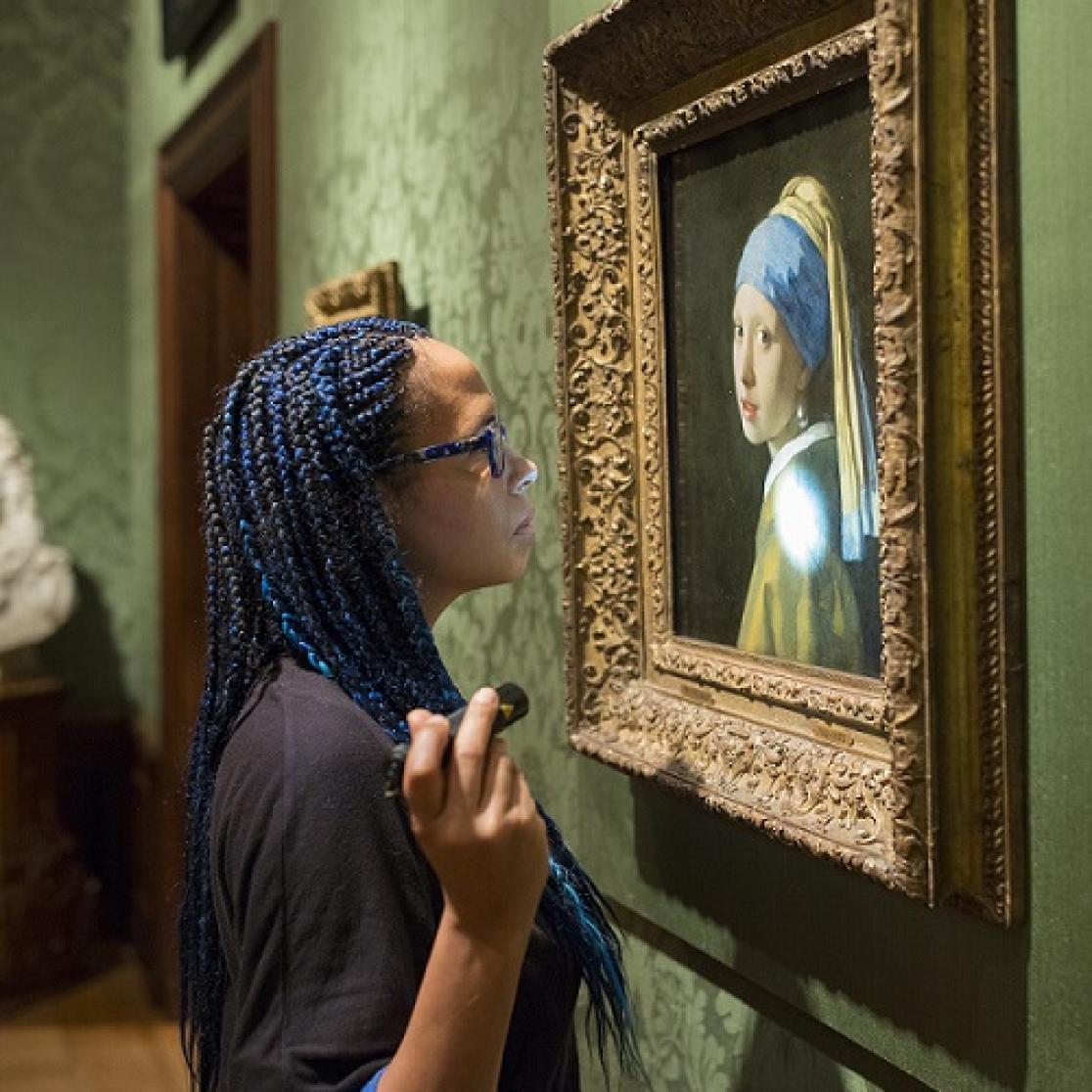
Also read
-
YUFE Academy Autumn 2025
Join the next YUFE Academy: a series of open lectures led by top professors and experts from our partner universities. Get your knowledge from a reliable source and feed your curiosity.
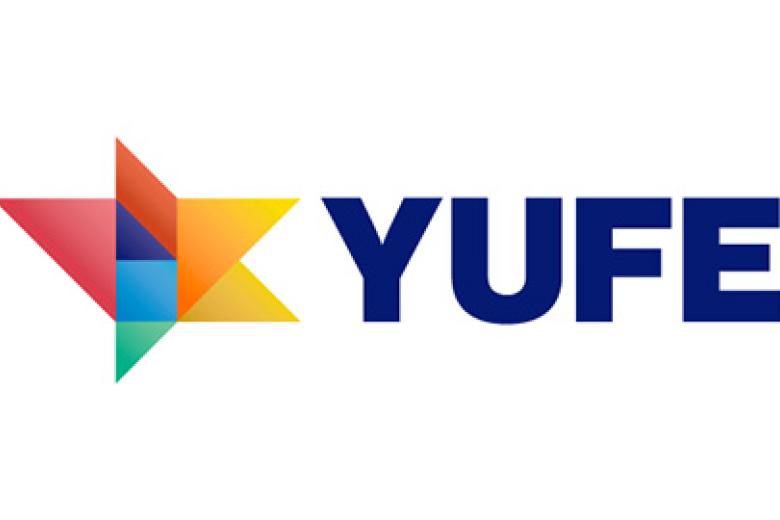
-
The Maastricht Consulates Prize for the best MA thesis on EU Law 2025 - Application open
The Corps Consulaire à Maestricht (the Consul Association of Limburg) is award a prize for the best master thesis in the field of EU law, written at the Faculty of Law of Maastricht University during the academic year 2024/2025.

-
Dr. Anjusha Mathew uses mass spectrometry and cryo-EM to transform our understanding of complex protein structures
In 2018, Anjusha Mathew moved from India to Maastricht to begin her PhD. Seven years later, she is an assistant professor at the M4i research institute, part of the Faculty of Health, Medicine and Life Sciences. Recently, she was thrilled to receive a major grant for her research, in which she links...

